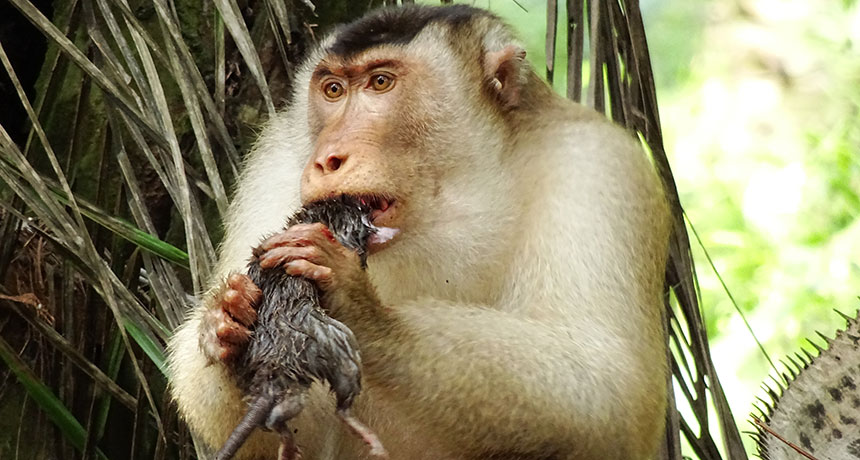Malaysia’s pig-tail macaques eat rats, head first
The primates had been known to eat fruits, insects and even dirt

PROTEIN SNACK Southern pig-tail macaques have been observed devouring rats — possibly helping rodent control on Malaysian oil palm plantations.
Anna Holzner/Macaca Nemestrina Project






